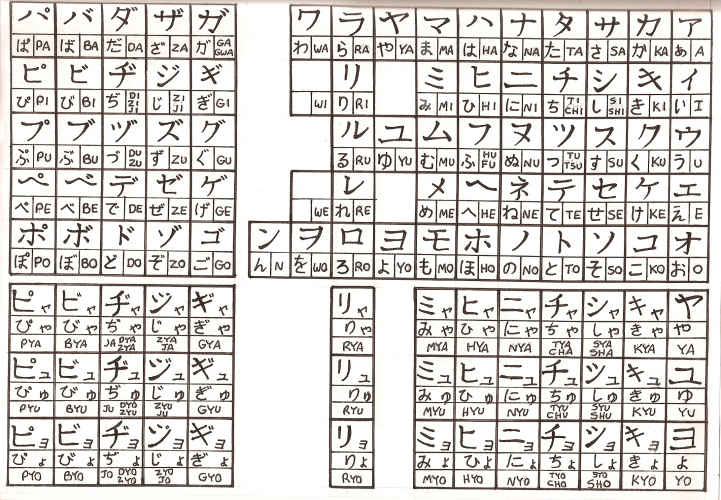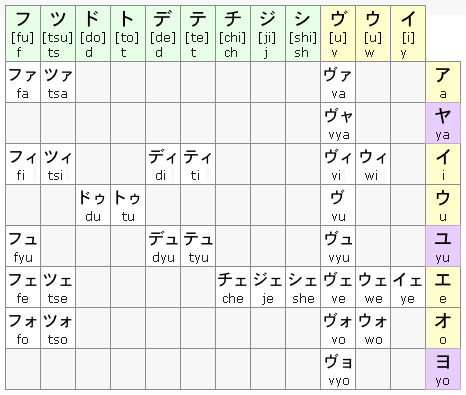[MoCHE] Basics of Japanese
 •
by
•
by Dr.Jekica

Greetings ladies and gentlemen, proud citizen of eJapan. I am happy to see that some of you wants to help MoCHE and share their knowledge, and I will now present you article from shirosakura. Hope that you will enjoy it as much as I did, and that in future we will have more articles like this. Thank you again shirosakura for taking time to share this with us. Enjoy
🙂

はじめまして, みなさん! ひさしぶりね?
Today, I’m bringing you a guest article from the Ministry of Culture, History, and Education’s headquarters in Osaka to all around Japan! This is going to be a first article on many on the basics of Japanese, so whether you’re new to language, done a little bit of studying, or a 日本語-pro and feel like coming along, please keep reading! よろしくおねがいします!

Although this is a lesson I’m sure that many people have had here, it’s important basic to know if you want to be successful at reading and writing Japanese. There are three kinds of characters in Japanese: katakana, kanji, and hiragana. (There’s also a writing system called romanji, which I will cover later). It’s possible to see these all in a single sentence.
アニメ を 見ます. (I watch anime)
Hiragana and Katakana represent sounds, and make up the primary Japanese alphabet. Hiragana is primarly seen with verb endings and Japanese words that don’t have Kanji, and is often used in educational texts, informal situations (like cute messages) and when dealing with children. Katakana is mostly used for writing loanwords and foreign names. Kanji, or Chinese characters, represent sounds and meanings, and are usually used in adjectives, verbs and nouns.

There are forty-six basic hiragana symbols. You will notice all of the sounds are based off five vowels: a (as in ahh), i (and in ee), u (as in ooooh), e (as in ehhh???) and o (as in oh!). While the vowels can sometimes stand alone as they’re own syllables, the consonants k, s, t, n, h, m, y, and r can also stem from them as well. Three syllables, わ (wa), を (wo), and and ん(n) are outliers, and don’t follow this pattern precisely.

Furthermore, you can create additional sounds by adding diacritical marks to select syllables. K, s, t, and h can become g, z, d, and b by adding (“) to the end of the character. The consonant h changes to p with a little circle (⁰)

Going even further, there are contractions of sounds as well. They replace the い-sound in syllables with either a small ゃ, ゅ, or ょ.

If you’re wondering why there are so many syllables, remember that a lot more words exist in Japan now than it did 500 years ago! These were developed to keep pace with the growing world, and to make it easier to describe and learn about things that at one point were new to Japan (and if you ever feel bad, just remember that English has thousands of thousands of possible sound combinations~)


Katakana is an example of that. It’s pretty similar to hiragana, but with a few exceptions. When you need to illustrate long vowels (ケーキ, or cake, for example), you use a dash (―) to show it. There are also new sounds that exist to make up for sounds that originally didn’t exist in Japanese.


That’s all for the basics! Don’t feel like you have to memorize the entire chart now, as it certainly takes a while! But learning these syllables are important, as they are possibly the most basic step towards Japanese literacy anyone will ever take.
In the next lesson I’ll discuss Kanji and Romanji, along with some other points I couldn’t fit into this article! See you next time!

Your Ministry of Culture, History and Education team:
Minister - Dr.Jekica
Vice Minister - Nanashi Senshi
Author of text: shirosakura


Comments
v
good article 🙂
vote 🙂
Loved this article! Voted!
v,s nice article o/
good article !
Odličan!
U sunce ti...
great
123 🙂
オハヨウ
viva la Japan! v + s
Hiragana and katakana were created to fit kanji to the Japanese language. Kanji, as you might know came from Chinese during the Han Dynasty (Han is pronounced has Kan in Japanese, thus Kanji means Han characters).
Before that, there was no writing system in Japan. Since Chinese and Japanese grammar is completely different, there needed to be a way to conjugate Kanji to fit Japanese. Hiragana and katakana were developed from parts of particular Kanji by different groups of people in Japan. That is why Japanese has so many characters and is probably the most complex writing system in the world.